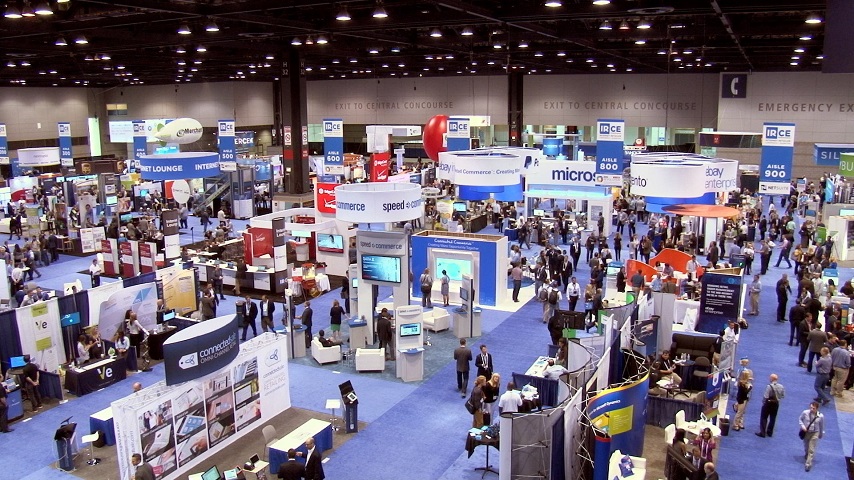
Event marketing is the backbone of any successful event, whether it’s a trade show, conference, or product launch. With the growing demand for engaging experiences, event planners need efficient marketing strategies to maximize attendance, drive engagement, and achieve measurable ROI. This blog explores a comprehensive event marketing solution that addresses these goals while leveraging technology, analytics, and creativity.
Why Event Marketing is Crucial
Event marketing is more than just promoting a date and venue—it’s about creating a compelling narrative that attracts the right audience. Successful marketing ensures:
- High Attendance: By reaching target audiences through multiple channels.
- Audience Engagement: Through content, technology, and interactive campaigns.
- Business Impact: Helping sponsors and stakeholders achieve their goals.
With these benefits in mind, let’s dive into an integrated event marketing solution that covers every stage of your event.
1. Crafting an Event Marketing Strategy
A strong foundation starts with a robust marketing strategy. Here’s how to create one:
Define Objectives and KPIs
- Clearly outline your goals: Is it ticket sales, lead generation, or brand awareness?
- Set measurable KPIs like registration numbers, website traffic, and attendee satisfaction.
Know Your Audience
- Use audience segmentation to tailor your message. For example, C-suite executives may prefer data-driven insights, while younger audiences might value networking opportunities.
- Conduct pre-event surveys to understand attendee expectations.
Create a Marketing Timeline
- Build a detailed calendar for each campaign phase—announcement, promotion, and follow-up.
- Factor in crucial dates like early bird deadlines and social media peaks.
2. Leverage Digital Channels
The digital landscape offers event marketers a wealth of tools to amplify reach. Here’s how to use them effectively:
Website Optimization
- Design an event website with user-friendly navigation, clear CTAs (Call-to-Actions), and responsive design.
- Include all essential information: event highlights, speaker bios, schedule, and FAQs.
Email Marketing
- Develop a sequence of personalized emails for different audience segments:
- Announcement email to generate buzz.
- Reminder emails with exclusive offers.
- Post-event follow-up emails to collect feedback.
Social Media Campaigns
- Create engaging content: teasers, behind-the-scenes footage, and testimonials.
- Use platforms like Instagram and LinkedIn to target specific demographics.
- Partner with influencers or industry thought leaders for increased visibility.
3. Harness the Power of Technology
Event Apps
- Use apps to streamline registration, enable networking, and provide real-time updates.
- Gamify app usage to incentivize engagement—offer rewards for completing activities.
AI for Personalization
- Deploy AI tools to analyze attendee preferences and suggest sessions, booths, or networking opportunities.
- Use chatbots for instant answers to attendee queries.
Marketing Automation
- Automate repetitive tasks like email sequences and social media posting.
- Tools like HubSpot or Marketo can integrate your campaigns seamlessly.
4. Content Marketing as a Driver
Your event is only as appealing as its content. Here’s how to make it stand out:
Engage Through Storytelling
- Highlight success stories from past events.
- Share behind-the-scenes insights to build anticipation.
Webinars and Pre-Event Content
- Host free webinars or Q&A sessions with key speakers to spark interest.
- Publish blogs or eBooks on event-related topics to establish authority.
Live Streaming and Video Content
- Use short promotional videos to showcase event highlights.
- During the event, live stream sessions to engage virtual audiences.
5. Foster Community Engagement
Interactive Campaigns
- Use polls, quizzes, or challenges on social media to create buzz.
- Set up hashtags for attendees to share their experiences.
Networking Opportunities
- Facilitate networking through matchmaking platforms.
- Offer dedicated networking lounges or virtual meeting rooms.
Exclusive Incentives
- Early bird pricing, VIP passes, and giveaways can motivate registration.
6. Measure and Optimize
To ensure your event marketing solution delivers results, track and analyze performance:
Metrics to Monitor
- Registration and attendance rates.
- Engagement metrics like social media shares, app usage, and session participation.
- ROI through lead generation and post-event surveys.
Optimize Based on Insights
- Use data from analytics tools like Google Analytics or event software to refine future campaigns.
- Conduct debriefs with your team to discuss successes and areas for improvement.
A Case Study: Marketing a Hybrid Conference
Let’s illustrate these strategies with a real-world example:
Event: Tech Innovators Summit (Hybrid)
Goal: Increase attendance and sponsor engagement.
Steps Taken
- Pre-Event: Launched a targeted email campaign and promoted webinars featuring keynote speakers.
- During Event: Used an event app for attendee interaction and live-streamed sessions to engage virtual participants.
- Post-Event: Shared highlights on social media and sent feedback surveys to all attendees.
Results
- Achieved a 30% increase in attendance compared to the previous year.
- Collected 2,500 qualified leads for sponsors.
Conclusion
An effective event marketing solution integrates strategy, technology, and creativity to ensure success. By defining goals, leveraging digital tools, and engaging your audience through tailored campaigns, you can maximize your event’s impact. Embrace these solutions, and you’ll not only drive attendance but also create memorable experiences that leave a lasting impression.